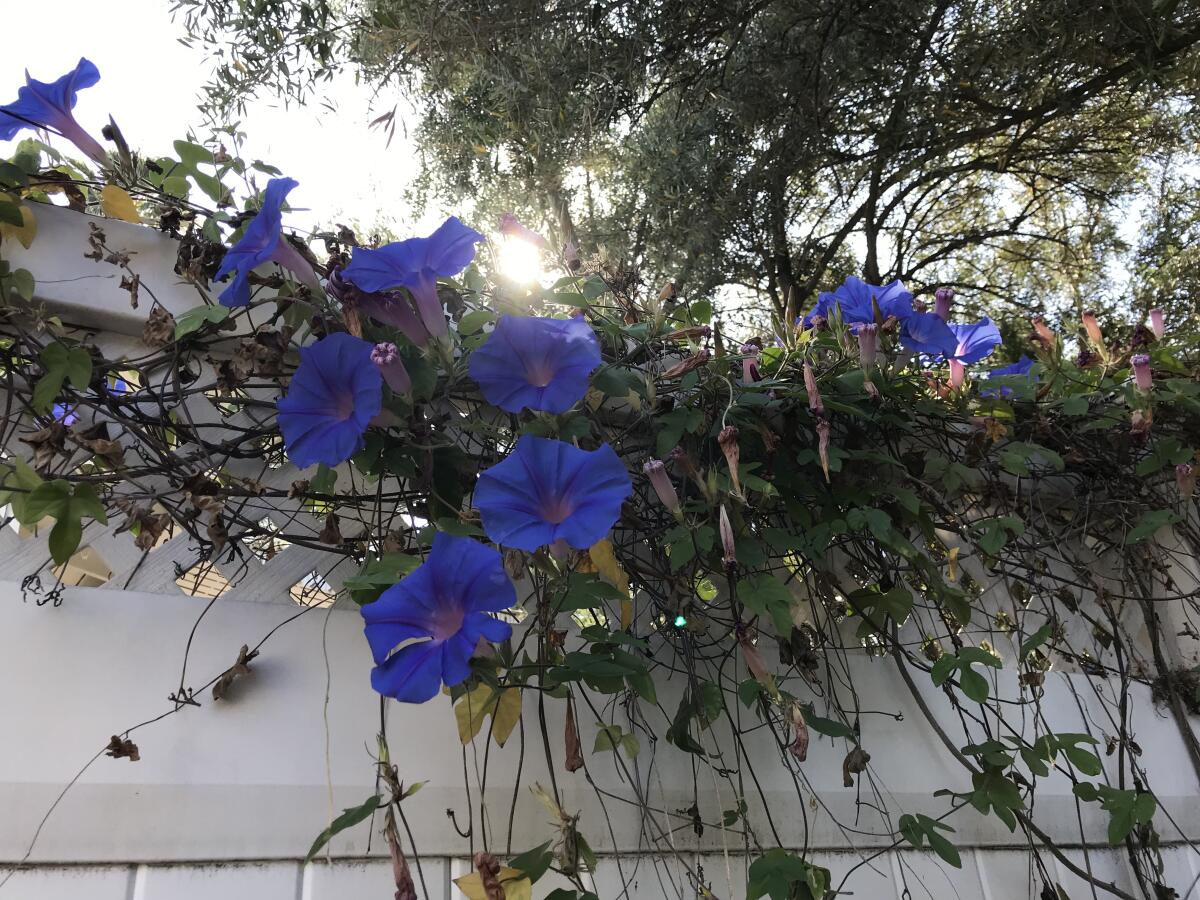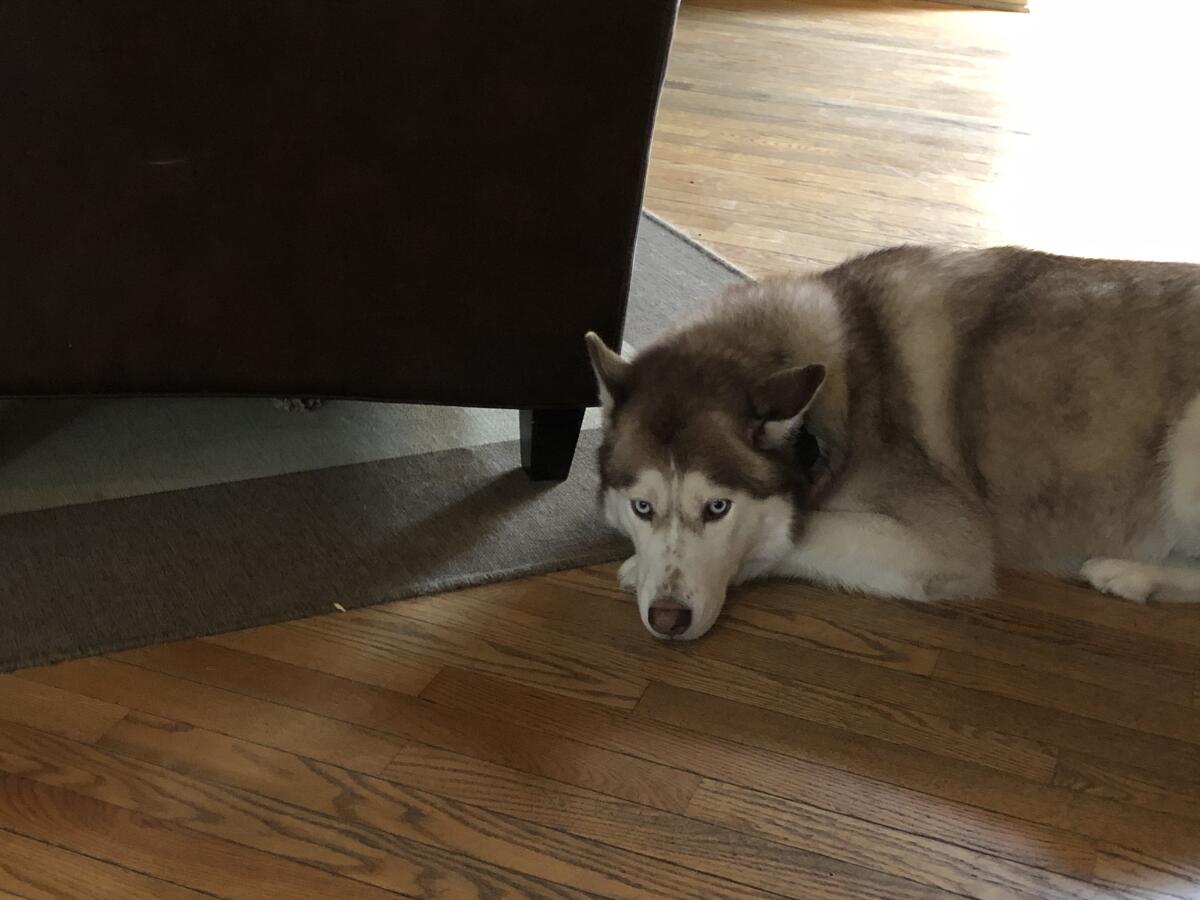Erskine: In this common house, we raised four uncommon kids

It’s never been a very good house. We will likely sell it soon, not long after the boy goes off to college. We’ve never been able to get the water pressure right, and the fireplace faces in a funky direction. The walls are too close. Like, right there.
There are a million things wrong with this house, yet a million things right. There’s a half-basement for the Christmas bins and a workbench. Rare in California, the basement is the perfect place to patch a bike tire or putter around with plants. The half-basement might be the house’s greatest feature.
Oh, and this old house also comes with a pet wolf, blue-eyed and bashful. And some tiny creature active in the attic.
It’s a fine house for doing laundry and watching the weather roll in. It has a handsome kitchen my late wife designed, with cherry cabinets and the most expensive appliances available. They never worked. The appliances are loaded with fussy circuit boards and electronic ignitions that clog with even the hint of yolk.
By my estimate, we have spent more to repair these appliances than what they initially cost, which, as I say, was a small fortune. I sold blood. I cashed some options. All so we could buy appliances that didn’t work.
Welcome to the modern age.
The floors are oak — thin slats that creak. There is ice cream in some of the grooves. And sea salt. And pickle juice. Where Posh pivoted in front of the fridge, that’s all prematurely worn and gray now, like that spot on a putting green that gets too many feet.

In the kitchen, the skylight used to leak. The surrounding drywall needs to be gooped with spackle, then painted. I can handle that. I just don’t. If anything, the tragedies of the past two years proved life is too short, which gave me a convenient excuse to dodge unnecessary chores. I will get to them eventually. When the boy moves out and there are no more ballgames to attend. Just before the real estate agent pops in for a quick look, nods her head and thinks to herself: “Good freaking luck.”
Across this entire house, it’s as if there are all these little codes you need to know — how to dig the sediment out of the kitchen faucet or how to tighten the ceramic shower handle after it falls off every few weeks. Clunk.
In the hallway, we keep one of my daughters’ old hair scrunchies wrapped around the cabinet knobs, because they won’t close completely. Without the hair band, you’ll rise in the night to use the loo, or check that suspicious sound coming from the den, and clunk your shoulder into the cabinet door, making you more ornery than you already are at 2 a.m., the orneriest time of day.
What I’m saying: Don’t forget the hair scrunchie.
The electrical is good, though, the roof and AC are new, and the septic guy says the tank seems to be working again now that Rapunzel has moved out with her miles and miles of linguini hair.
In spring, morning glories spill over the patio wall like an invasion.
Out back is a wall of olive trees. Like the basement, I love the trees. Basically, we purchased the grove of trees and there just happened to be a house attached. Each fall, the trees produce a billion black olives. We tried to cure them. But like the house, they would not be cured.
In this common house, we raised four uncommon kids. There were birthdays and proms, bloody knees and Scout meetings. We changed a million diapers here. We matched a lot of socks.
The garage still contains all sorts of youth soccer gear you can have, should you purchase this silly little house, which you probably won’t.
Then there’s “The Door.” The Door was used to record the kids’ heights as they grew, in their mother’s swirly handwriting, with 30 different pencils and pens. It is, quite possibly, my most prized possession.
When I leave this house for the final time, that door goes with me. I will likely use it as the base of a grandchild’s crib or maybe just hang it from a wall like artwork.
That’s really what this house is: a quirky piece of live art.
Dear real estate agent, how do you put a price on that?
For there are hissy fits in the wall paint, and laughter in the floors, and small dimples in the oak where the Christmas tree stood.
By the way, best to put the tree in the corner, where the lights bounce off the windows, then off the kids’ eyes when they spot the gifts.
I tell you, there’s a lot of life left in this old family home. Maybe we’ll just keep it.
More to Read
Sign up for The Wild
We’ll help you find the best places to hike, bike and run, as well as the perfect silent spots for meditation and yoga.
You may occasionally receive promotional content from the Los Angeles Times.











